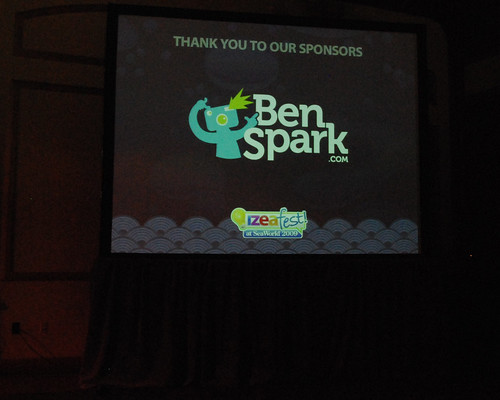IZEAFest Day one was so action packed and so crazy that I lost my voice and got a little hung over for Day 2 but that is okay because Day 2 was all about listening for me. That was a good thing because my piece of junk laptop wouldn’t work right for me the whole day. I closed the lid, sat back and took in the information as it came at me.
Daily Archives: October 3, 2009
The Muddy Fractured Web
Written by Chris Brogan on behalf of Trust Agents. This post powered by Sponzai
 This is a jumble of techie thoughts, and won’t necessarily appeal to everyone. Just the same, it’s on my mind.
This is a jumble of techie thoughts, and won’t necessarily appeal to everyone. Just the same, it’s on my mind.
I was thinking about an old article that quoted Joshua Schachter, founder of Delicious, where he talked about how he organized his site to have obvious syntax. He said, that once you get the hang of it, it became very easy to use the site, even from a browser window. Example: If I want to read any pages saved with the tag “chrisbrogan”, I can search http://delicious.com/tag/chrisbrogan . Now, replace my name with whatever else you want to search up on the address bar of your browser, and you pretty much know how to surf through Delicious without any effort.
For the record, Craigslist.org is like this. I can navigate it simply and from the address bar, and I understand what I’m searching out.
The entire concept of the URL, the uniform resource LOCATOR, was that we’d have a way to find resources (or web pages, or files, or whatever information) by way of coordinates that wouldn’t change.
Twitter introduced the need for URL shortening services. They were around before, but Twitter made them necessary. Now, they’re practically a business unto themselves.
And I’m thinking about projects like Glue and now Sidewiki (Google’s little “stick a wiki against any website but only if you’re using this application to see it” project). They’ve obfuscated the clarity of web pages. Okay, I get the notion of annotating the web. I understand the premise behind having ways to see things in our own way out in the wild web, but I think it messes up the point.
People had some real mixed emotions about Seth Godin’s Brands in Public project, but I couldn’t see the fuss. Seth just organized a bunch of information that was out there, and gave brands the opportunity to buy into his effort. The brands could’ve done all the work themselves. Seth saved them a step. The project, however, doesn’t create two webs. It just revisits this information in another format.
The splintering of commentary and conversations problem (how services like FriendFeed and Twitter and Facebook scatter our conversations all over the web instead of consolidating them) is real, and yet, it’s a matter of views. We’re interacting with data where we consume it, which is sensible enough. The missing tech, actually, is just the ability to get those comments all corralled and easy to respond to in some way (and many companies are trying to make that easier).
So where does this take us?
First, I think abstraction is here to stay. I don’t think we’ll have simple URLs to remember for all things (wish it were, but it’s not). I think the trend of shorteners that supposedly add value is here for a while, too. I think the fractured conversation is here to stay.
Now, will this impact business? Not exactly. Instead, it will require us to pick our battles, to determine just how splintered and muddy we want to get to catch up every drop of conversational/business goodness, and it will require us to keep futurists and sages on speed dial (how quaint a term is that?).
Funny thing is: many will never even know this war is even being waged.
